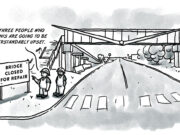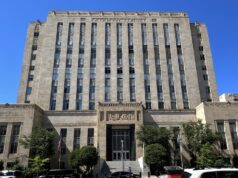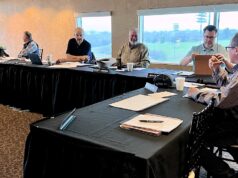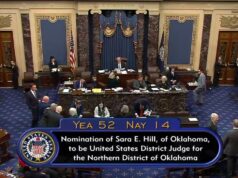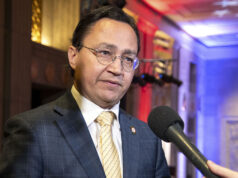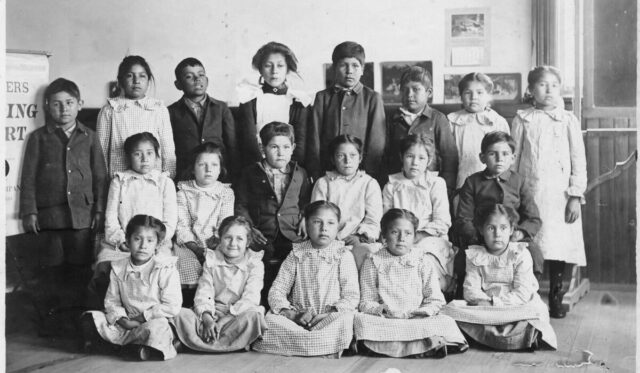

WASHINGTON — The U.S. Department of the Interior’s three-year investigation into federally funded Indian boarding schools has reaffirmed in a second and final report that many Native American children in the institutions suffered physical, sexual and emotional abuse.
The report builds onto the initial volume published in May 2022, which marked the first list of Indian boarding schools established between 1819 and 1969. Aiming to address the historical and continuing impact of such schools, the report contains records of deaths and burial sites at schools, as well as documented forms of abuse Indigenous students suffered.
The Interior Department’s investigation found 417 Indian boarding schools across the nation, with Oklahoma having 87, more than any other state.
This story was reported by Gaylord News, a Washington reporting project of the Gaylord College of Journalism and Mass Communication at the University of Oklahoma.
Though the Interior Department suspects the number will rise, it confirmed that 973 American Indian, Alaska Native and Native Hawaiian children died at boarding schools, with 283 yet to be identified. Of the total number of student deaths, 109 died in an Oklahoma boarding school.
“Who thought that there would be cemeteries at Indian boarding schools?” asked Cornel Pewewardy, associate professor of political science at the University of Central Oklahoma and former vice chairman of the Comanche Nation. “Each one of those have a story of how they got there, mostly by force. How are you going to bring those children back home?”
The Interior Department findings did not surprise Osage and Kickapoo citizen Joey Allen, who still recalls the stories of abuse from the days when he attended the Seneca Indian School in Wyandotte, Oklahoma.
“I talked to a girl one time, she was crying, and I asked her what’s the problem. She said, ‘I was abused by one of the teachers,’” said Allen, who attended the Seneca school from 1966 to 1969.”
Allen discussed a teacher employed by the Society of Friends (Quakers), which operated the school from its opening in 1872 until it closed in 1980.
“He was checking girls out of the school to have them ‘clean his house’ but he would have them do more than cleaning,” Allen said.
Seneca was one of 87 boarding schools across the state that were government operated or run by religious groups. In 1928, it became an “institutional school” for children of hardship after a measles and typhoid outbreak that left “dozens of children” dead.
U.S. Secretary of the Interior Deb Haaland (Laguna Pueblo) and Assistant Secretary for Indian Affairs Bryan Newland (Bay Mills Indian Community), who led the research team, did not specify in the report how students died, but possible suggestions were offered.
“We do know that there was, historically, a lot of disease outbreak at these schools,” Newland said. “It’s very likely that many of those kids died as a result of abuse or the aftereffects of abuse that was done to them at those schools.”
‘These institutions are not just part of our past’
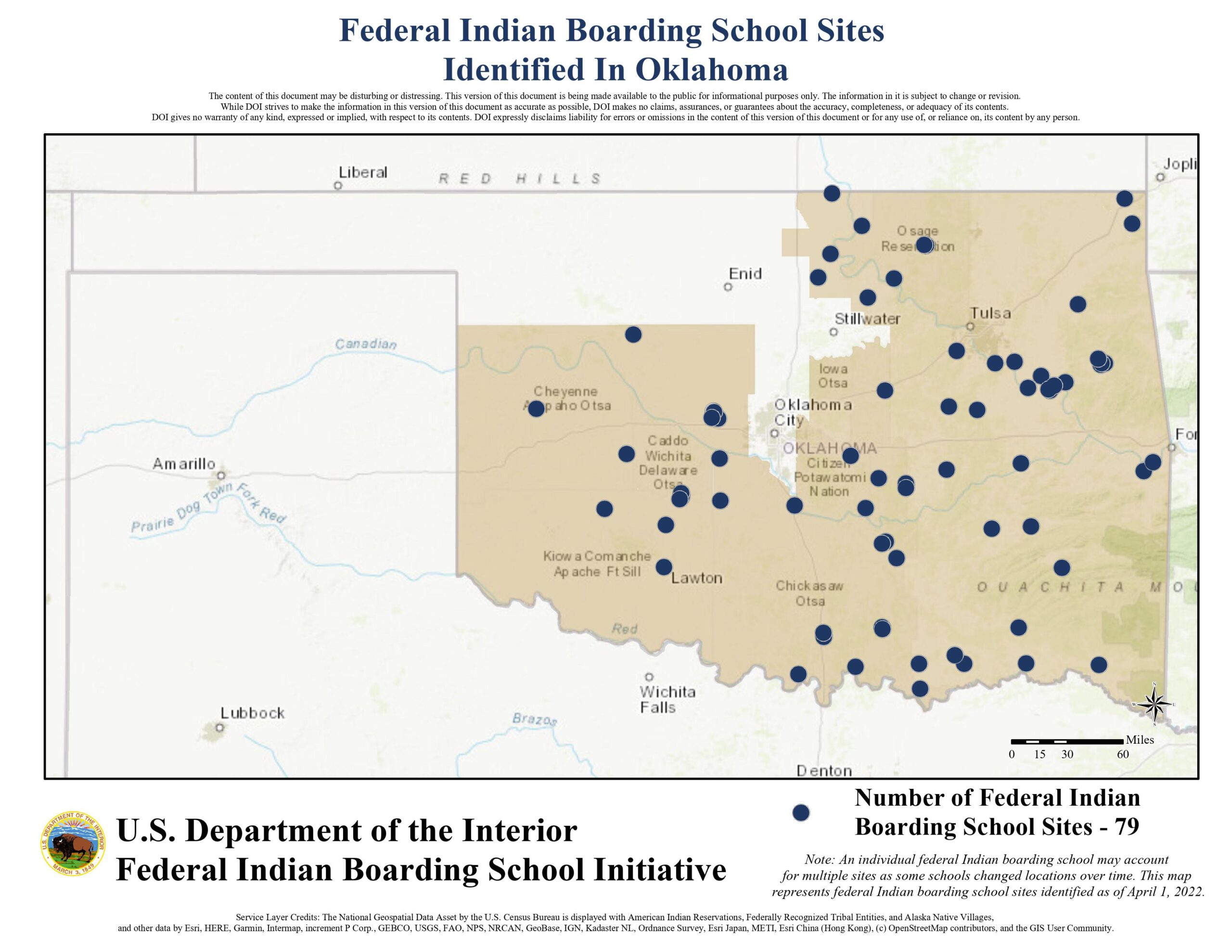
Within Native communities, Indian boarding schools are often hard to discuss, as they can serve as reminders of traumatic experiences.
“Shimá sání (my great-grandma) doesn’t like to talk about her time in boarding school,” said Michael Knight, who is Osage, Navajo, Cherokee, and Choctaw. “If they were caught speaking Navajo, their mouths would be rinsed with soap and water, or they would be thrown in a basement, and made her hold her hands on top of a stack of tall books, locking her down there for hours.”
Indian residential schools were used as a means to forcibly assimilate Native American children, which involved diminishing Indigenous culture and often forcing children to forget their languages and religion.
“The assimilation methods used in federal Indian boarding schools were physically all-encompassing, from the pain of being stripped and ‘cleaned’ upon arrival, to the erasure of Native foods, and having their hair cut,” the report states.
For many, federal Indian boarding schools created a legacy of erasure and trauma. The new report identifies intergenerational trauma, lasting impacts on physical and mental health, and debilitated tribal economies among the present-day harms from such schools.
“As we have learned over the past three years, these institutions are not just part of our past,” Newland said. “Their legacy reaches us today and is reflected in the wounds people continue to experience in communities across the United States.”
While working as an art director and Osage Nation consultant on the set of Killers of the Flower Moon, an Oscar-nominated film directed by Martin Scorsese that follows the murders of the Osage people during the 1920s oil boom in Oklahoma, Addie Roanhorse was reminded of historical trauma after seeing her descendants depicted in the film.
“That word kept coming up, and I didn’t understand it,” Roanhorse said. “Then we started filming, and I was watching scenes being shot over and over, and I was so upset. The generational trauma is there.”
In addition to Indian boarding schools, the U.S. government also adopted hostile assimilationist policies against Native Americans, such as the Dawes Act of 1887. The act “focused specifically on breaking up reservations and tribal lands by granting land allotments to individual Native Americans and encouraging them to take up agriculture.”
U.S. Rep. Tom Cole (R-OK4), a member of the Chickasaw Nation, said in a statement about the report that he is hopeful it can continue to shed light onto this “sad chapter” of history.
“I am glad to see the Department of the Interior investigating the history, policies, and devastating impacts of Indian boarding schools, as it is imperative that we educate and spread awareness about these schools, many of which were operated and located in Oklahoma, and the fates of the Native American children who never returned home,” Cole said.
Cherokee Nation Principal Chief Chuck Hoskin Jr. also issued a statement expressing his appreciation for the report and “renewed effort to have transparent and difficult discussions” about Native American history.
“This report is long overdue, but it is appreciated,” Hoskin said. “We hope that the next steps beyond this federal investigation help account for the injustices that have occurred and that we can begin to heal some of the generational traumas Native people still struggle with as a result of past anti-Indian policies and practices.”
Choctaw Nation Chief Gary Batton said the findings of the Interior Department report shine a light on the “dark history” of suppressing Native American culture.
“We welcome the continued investigation of these federally run boarding schools and support Secretary Deb Haaland’s efforts to ease the pain and provide answers to so many families, many of whom lost all contact with their children after being forced to send them to these boarding schools,” Batton said in a statement.
Native communities have since repatriated Indian boarding schools, with some operating now as a means to grow community and foster cultural knowledge between tribes. Sequoyah Schools in Tahlequah and Riverside Indian School in Anadarko are the last remaining Indian boarding schools in Oklahoma.
“Boarding schools are still a big chunk of our history because it changed the way we interacted with the people around us,” Osage artist and Native activist Dana Bear said. “I thought about sending my daughter to either Sequoyah or Riverside because she wants to go to school with other Indians.”
RELATED
‘We need to tell what happened’: Indian boarding school survivors speak in Anadarko by Tres Savage
Sequoyah Schools graduate Kiana Hamilton (Cherokee, Osage, and Acoma Pueblo) said she is grateful for her time at the boarding school, as it brought Natives together from across the country.
“My great-grandparents met at Carlisle Indian Boarding School (in Pennsylvania), and I grew up hearing about what they have endured, and now me, having graduated from an Indian boarding school, the rules have completely reversed,” Hamilton said.
The Interior Department report recommended the U.S. government “acknowledge, apologize, repudiate, and affirm” by issuing a formal apology for its role in “adopting a national policy of forced assimilation of Indian children, and carrying out this policy through the removal and confinement of Indian children from their families.”
It also advised investing in remedies to present-day impacts of Indian boarding schools, such as redressing Indian education and revitalizing First American languages and building a national memorial to commemorate the experiences of Native Americans.
Osage elder Raymond Lasley is an advocate for tribal sovereignty, having fought for tribal sovereignty at the 1973 Wounded Knee Occupation in South Dakota. Only 21 at the time, he learned the importance of tribal sovereignty, which gives Native Americans the right to govern themselves.
“But still, we have our own destiny in our own hands, we have our own opportunity to make our own way,” Lasley, 71, said.






